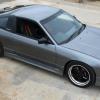N1 Oil Pump - Epic Fail
Announcements
-
Similar Content
-
Latest Posts
-
I might have to shoot them an email. Pity the exchange rate is so bad at the moment. BTW, thanks for posting that table makes interesting reading.
-
By robbo_rb180 · Posted
Add these Sensors -Wideband, Oil Pressure, Fuel pressure, Intake air temp Good inspection of ignition system of coils, plugs and loom (12v feed and good ground)- a r35 kit is best bang for buck upgrade. A decent tuner should be able to see any issues with the trigger system- a link has good filtering but a good simple upgrade is the nz wiring bolt in kit. Check and replace all the fuel filters- you would be surprised at intank filter after a few years. Also good to check for any leaks on vac hoses and pipe work as has been said. No need to go overboard and spend big $$$ to enjoy the car. A quality tuner is getting harder to find as anyone with a laptop thinks they are a tuner. A link has great features to check sensor voltages and frequency inputs and easy to see live by pressing f12. The link can do a TPS & RPM fuel/ignition mapping on ITB cars then add a 4D table with MAP and ability to add a 5D to it (can help with economy at cruise with wheel speed vs TPS) Where are you located as that will help narrow down a good tuner ? -
Reviving an old thread, I reckon my stagea is starting to slip. Car usually gets parked on a hill, narrow driveway so cant go up the driveway smoothly, anyhows, lately first gear feels "sluggish"? Not responsive. Feels like I gotta run the engine more than usual to get off the line... Any recommendations for transmission servicing in Sydney? Or possibly just an excuse to go manual ?
-
Well, moulded carpets should fit well if the buck they use is the right shape. The finish is then just a case of stiching the trim around the edges. Shuoldn't be too hard to get it right. Back in the day, replacement carpets were all "fitted", in that they were stitched together, with cuts and slices taken out to make them form the shapes. Many more opportunities to get it wrong, hence all the concern over good vendors and bad vendors.
-
A timely blog via AASA (keeping in mind they sell brake fluid of course...) https://www.msbgarage.com/blog/news-and-blogs/brake-fluid-what-should-i-use/
-







Recommended Posts
Create an account or sign in to comment
You need to be a member in order to leave a comment
Create an account
Sign up for a new account in our community. It's easy!
Register a new accountSign in
Already have an account? Sign in here.
Sign In Now